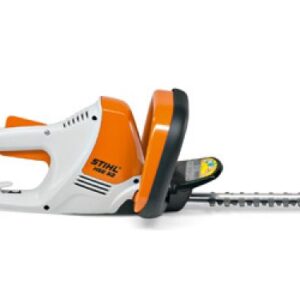Mastering the Art of Hedge Trimming: A Comprehensive Guide
3 min read
Hedge trimming is both a science and an art, requiring precision, technique, and the right tools. In this comprehensive guide, we delve deep into the world of hedge trimmers to help you achieve pristine results every time. Whether you’re a seasoned landscaper or a homeowner looking to spruce up your yard, mastering the art of hedge trimming will elevate your landscaping game to new heights.
Understanding Hedge Trimmers
Types of Hedge Trimmers
There are several types of hedge trimmer available on the market, each catering to different needs and preferences. From electric to gas-powered, corded to cordless, understanding the pros and cons of each type is essential in selecting the right tool for your specific requirements.
Electric Hedge Trimmers
Electric hedge trimmers are lightweight, easy to maneuver, and emit zero emissions, making them an eco-friendly choice. They are ideal for small to medium-sized hedges and offer hassle-free operation with minimal maintenance.
Gas-Powered Hedge Trimmers
Gas-powered hedge trimmers, on the other hand, pack more power and are suitable for larger hedges and tough, overgrown foliage. While they offer unparalleled cutting performance, they require regular fueling and maintenance.
Corded vs. Cordless Hedge Trimmers
Corded hedge trimmers provide continuous power, making them suitable for prolonged use without the hassle of recharging batteries. On the contrary, cordless hedge trimmers offer freedom of movement without being tethered to a power source, perfect for maneuvering around large yards.
Key Features to Consider
When choosing a hedge trimmer, several key features should influence your decision:
- Blade Length: Longer blades are ideal for trimming large hedges, while shorter blades offer precision for shaping and detailing.
- Blade Type: Dual-action blades provide smoother Stroke machines cuts with reduced vibration, while single-action blades are more straightforward and suitable for light trimming.
- Cutting Capacity: Consider the maximum branch diameter the trimmer can handle to ensure it meets your trimming needs.
- Weight and Ergonomics: Opt for a trimmer that feels comfortable to hold and maneuver, especially for extended use.
Hedge Trimming Techniques
Preparing for Trimming
Before diving into hedge trimming, it’s essential to prepare both yourself and the hedge for the task ahead. Start by inspecting the hedge for any obstructions, such as branches or debris, and clear them away to ensure a smooth trimming process.
Basic Trimming Techniques
Straight Cuts
To achieve clean, straight cuts, position the hedge trimmer parallel to the hedge surface and move it in a steady, sweeping motion along the desired cutting line. Take care to maintain a consistent cutting angle for uniform results.
Shaping and Sculpting
For shaping and sculpting hedges into intricate designs, use the tip of the trimmer to create precise cuts and contours. Take your time and step back periodically to assess the overall shape and symmetry of the hedge.
Safety Tips
Safety should always be a top priority when operating hedge trimmers. Here are some essential safety tips to keep in mind:
- Wear appropriate protective gear, including gloves, safety goggles, and ear protection, to shield yourself from debris and noise.
- Avoid trimming in wet or rainy conditions to prevent slippage and electrical hazards.
- Keep the trimmer’s power cord or battery pack away from the cutting blades to avoid accidental damage or injury.
Maintenance and Care
Proper maintenance and care are crucial for prolonging the lifespan of your hedge trimmer and ensuring optimal performance. Here are some maintenance tips to follow:
- Regularly clean the blades and housing to remove debris and prevent rust buildup.
- Lubricate the blades and moving parts to reduce friction and extend their longevity.
- Inspect the trimmer for any signs of wear or damage, such as dull blades or loose screws, and address them promptly.
Conclusion
Mastering the art of hedge trimming requires a combination of skill, knowledge, and the right tools. By understanding the different types of hedge trimmers, honing your trimming techniques, and prioritizing safety and maintenance, you can achieve professional-quality results that enhance the beauty of your landscape.




